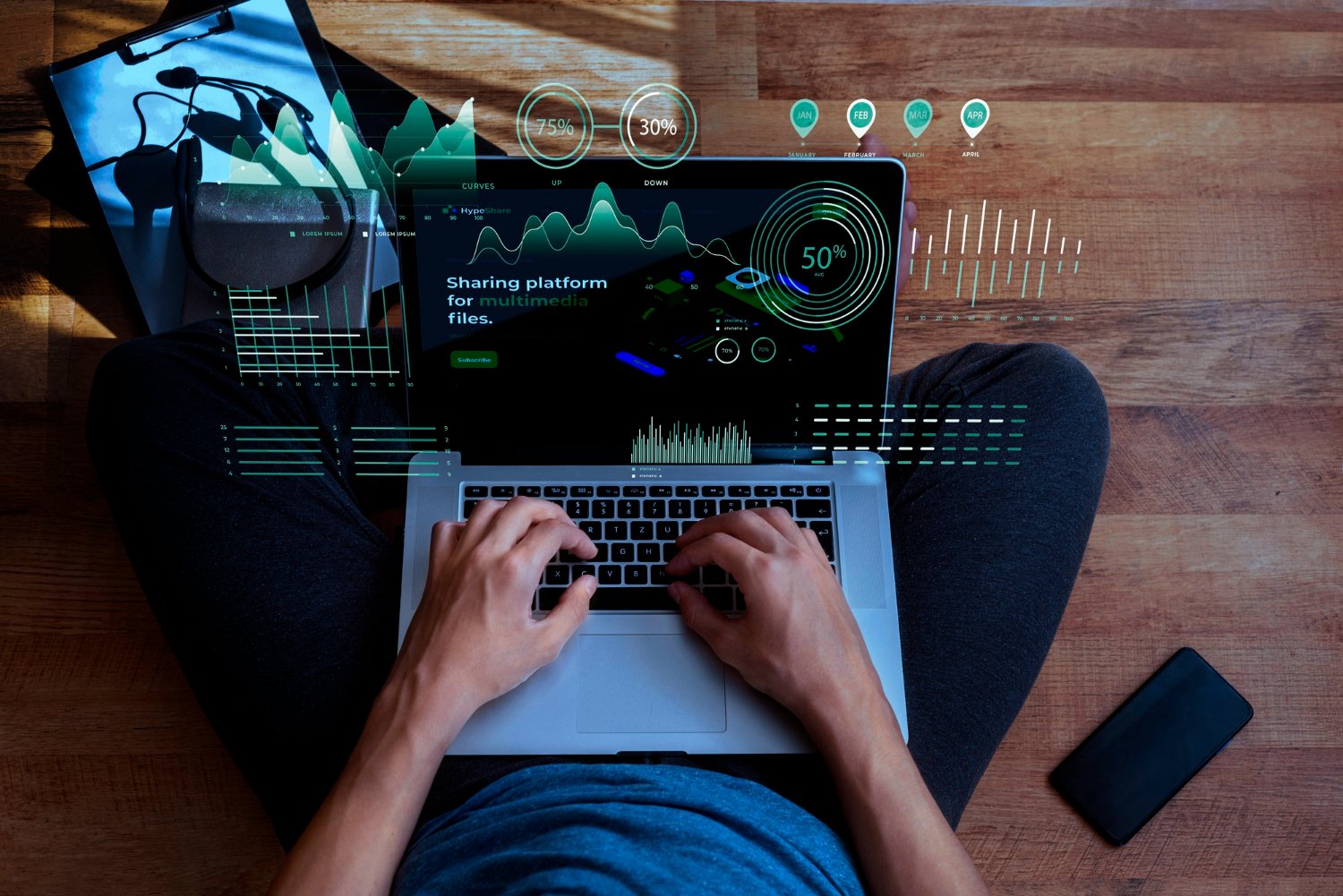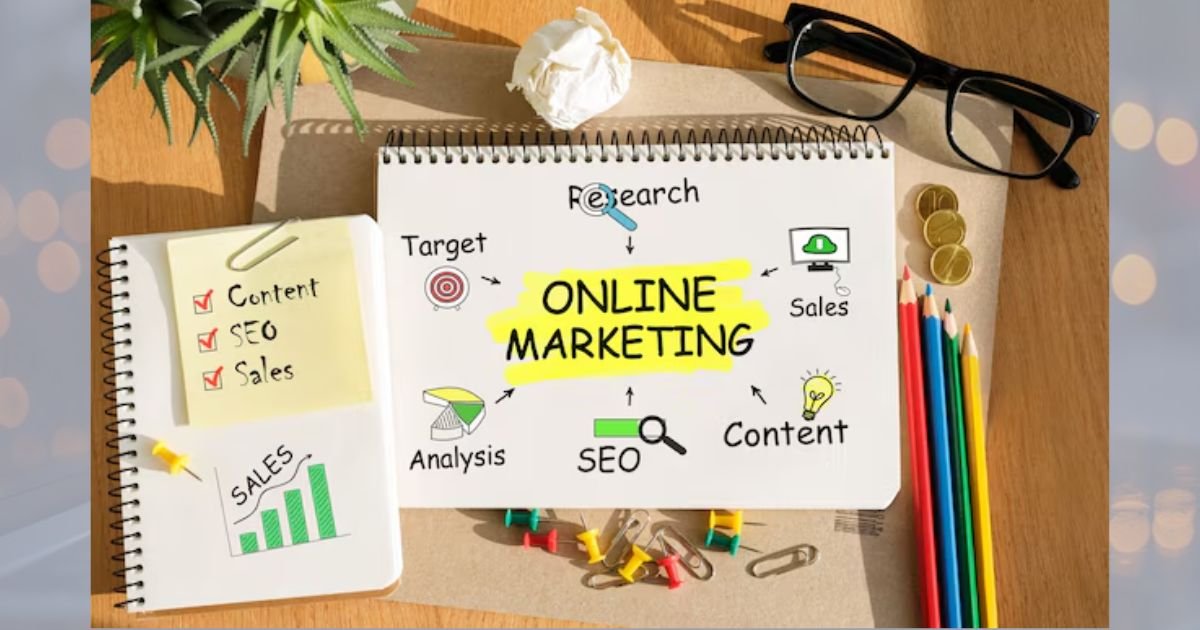Technology
The Invisible Tech You Use Every Day Without Knowing It

A lot of the time, our phones, computers, and smartwatches come to mind when we think of technology. However, many of the most important things that affect our lives are not easily accessible. This is a list of technologies and systems that operate in the background, enhancing our daily lives without our awareness. The way your GPS tells you to go, and the things you see on social media are both made with technology that you can’t see. It changes the things we count on every day, like the water we drink and the fun we have.
This quiet tech is important for making our lives easier, more connected, and more relaxed, even if it’s not very flashy or easy to see. In this blog, we’ll talk about tech that you use every day but might not know it. Find out how these innovations that you can’t see change your life and how they do it without you having to pay attention to them.
The Algorithms Behind Your Digital Life
You can’t see the choices that are being made for you when you use a streaming service, read social media, or shop online. So that you can change what you see and do, these lines of code look at your likes, habits, and even small patterns in the way you act. To determine what movie you might like next, Netflix utilizes intelligent recommendation systems that leverage AI. Social media sites use the same reason to show you more of the things they think will interest you the most.
Sites like Amazon use data to figure out what you might like and show you more of it. You don’t have to help or give permission for these systems to watch, learn, and change. We don’t know how these thoughts are quietly influencing our actions, thus we rarely consider them. They have a small impact on what we buy, read, watch, and listen to, which can be both helpful and upsetting at times.
The Smart Infrastructure Running Your City
Smart infrastructure is when you drive through traffic lights that work together, drink clean water, or see a city bus show up on time. These systems comprise a network of devices, software, and tools that enable communication between them. They monitor and manage the city’s operations in real time. Adaptive traffic control systems, for example, use sensors to find traffic jams and change the times of traffic lights to make traffic move more smoothly. Water treatment plants utilize real-time tracking to ensure the production of safe drinking water while minimizing waste.
Even the people who pick up your trash use tools to plan their routes. Moreover, it allows them to do their jobs more efficiently and sustainably. These services are made feasible by IoT and other technologies that allow objects to communicate with each other and a central computer. These changes make a big difference in your life, even though you can’t see them. Many people are unaware of the thought and technology that go into running cities today, yet they utilize these tools every day.
Cloud Computing: The Silent Power Behind Your Apps
Google Docs, Dropbox, and Spotify may be used daily without you thinking about where your data are stored or how they work. That’s cool about cloud tech. With cloud infrastructure, your apps and data can run and be stored on servers located far away rather than on your device. The words you write in Google Docs are read and saved on a server in the cloud. This allows everyone to work together simultaneously from anywhere.
When you play Spotify, tracks are downloaded and delivered through fast, efficient cloud networks. Everything, from backing up your phone to storing your social media photos and making changes to apps, is run by the cloud. There is no noise from these systems when they are running. However, you don’t have to worry about storage or handling complicated hardware. Many people are unaware that without cloud computing, many of their favorite services would not exist or would be significantly less stable and user-friendly. Tech is always there for you, but you never see it.
Machine Learning in Customer Service and Healthcare
When you talk to customer service online or get health information from your smartwatch, machine learning is probably at work. This technology, which you can’t see, analyzes large datasets to identify patterns, enabling it to make informed predictions. Bots that chat and help people online learn how to deal with customers by talking to thousands of people. This helps them understand what you want to ask and answer it well. Most of the time, these bots can handle everything on their own, from easy FAQs to problems with your account.
In healthcare, machine learning tools analyze factors such as a patient’s heart rate, sleep patterns, and blood oxygen levels to provide them with useful information and input. Some systems are smart enough to know when something is wrong and tell you to see a doctor. This could help save lives. There are medical tools that utilize image recognition to identify signs of diseases, such as cancer or asthma, more quickly than other methods. These systems enhance results and experiences without requiring users to understand how they work. They work in the background of websites, apps, and smart tech. There is a new idea here that does work in the background.
Conclusion
Most of the time, we don’t even notice the technology that makes our lives possible today. We utilize robust systems that make our lives easier, faster, and safer every day, from the moment we wake up and check our phones to when we go to sleep and track our sleep. Our cities run easily thanks to smart infrastructure. Algorithms decide what to buy, cloud computing runs our favorite apps, and machine learning gives us personalized information and help. These are great new ideas that don’t require us to understand the complicated science that made them possible.
That’s both the beauty and the challenge of unseen technology: it must be strong, safe, and useful without being visible. You might not be able to see these things happening, but you can see what they do. These techs show that the most important ones aren’t always the ones people see. Smart technologies that operate quietly and continuously in the background are sometimes the most important ones. These tools, which we can’t see, will become increasingly important as the future becomes more connected. They will change our world without needing our direct attention.
Business
Ethereum in 2026: Can You Still Mine It or Not?

Ethereum has been one of the most influential cryptocurrencies since its launch in 2015. It gained immense popularity among developers and investors due to its smart contracts and decentralized applications. On the other hand, Ethereum has undergone significant changes over the years. With Ethereum 2.0, one of the most significant changes was the transition from Proof of Work (PoW) to Proof of Stake (PoS). The goal of this change was to make the network more scalable and use less energy.
Now that it’s 2026, many people want to know: Can you still mine Ethereum? The answer may not be as clear now that the Ethereum blockchain no longer relies on standard mining. This blog will discuss the current state of Ethereum, the impact of the switch to staking, and what options are available to those who previously mined ETH. Here is everything you need to know about Ethereum in the year 2026, including whether mining is still an important part of its environment.
The End of Proof of Work for Ethereum
With an update called “The Merge” in September 2022, Ethereum’s mining process came to an end. Proof of Work (PoW) was replaced by Proof of Stake (PoS) with this significant change. Miners used very fast computers to figure out hard problems and get rewards in the PoW model. PoW, on the other hand, consumed a significant amount of energy and generated environmental problems. That’s why the people who work on Ethereum switched.
Ethereum no longer needs miners because of PoS. Instead, validators risk ETH to keep the network safe. Randomly selecting these validators to verify deals and add new blocks is how they perform their job. As a result, GPUs and ASICs, which were once used for mining, are no longer suitable for Ethereum. Now that it’s 2026, the answer is clear: you can’t mine Ethereum the old way anymore.
Ethereum Staking: The New Way to Earn ETH
Although you can no longer mine Ethereum, you can still stake to support the network. This is what Proof of Stake is all about. You need to deposit 32 ETH to become a validator. You can earn reward points for verifying deals. This method is easier to access and uses less energy than mining.
Don’t worry if you don’t have 32 ETH. You may join a pool for stakes. With these pools, money from multiple users is combined to reach the required amount. Then, the prizes are divided based on the amount each person contributed. As of 2026, staking is the standard way to help the Ethereum network and make money without doing anything. Mining is over, and holding is the new thing to do. For the blockchain’s long-term health, it’s also safer and more flexible.
What Happened to Ethereum Miners?
Miners had to decide what to do after Ethereum moved to Proof of Stake. Their pricey mining gear was no longer useful for Ethereum. Other miners transitioned to mining other cryptocurrencies, such as Ergo (ERG), Ravencoin (RVN), or Ethereum Classic (ETC). Some miners sold their hardware. Proof of Work is still used for these coins, and GPU mining is still possible. However, these options don’t generate as much revenue or remain as stable as Ethereum has.
Many miners lost money because the rewards were low and the cost of power was high. Others utilized their powerful GPUs to expand into new areas, such as cloud computing or AI processing. In 2026, most people who previously mined Ethereum have either transitioned to other jobs or ceased working in the field altogether. The end of ETH mining marked the end of a chapter, but it also prompted people to think of new ways to utilize their hardware and skills.
Can You Still Mine Any Form of Ethereum in 2026?
Forks and other networks, like Ethereum, that use Proof of Work are still in existence in 2026, but Ethereum itself can’t be mined. One example is Ethereum Classic (ETC), which is the first form of Ethereum before it split in two in 2016. Mining is still possible on Ethereum, and its community is very loyal. You could also try alternatives like “ETHPoW,” a fork that kept the PoW model after the Merge.
However, these networks are typically smaller and generate less revenue. Not as many people want them, and they’re not worth as much as ETH. To ensure that mining them is worth the cost of energy and hardware upkeep, you need to perform extensive calculations. In short, you can no longer mine the main Ethereum (ETH) system. You can only mine coins that resemble Ethereum or originate from it. Before you put your time or money into a mining project in 2026, you should know the difference.
Should You Invest in Ethereum in 2026?
In 2026, Ethereum remains a viable investment option, despite the fact that mining is no longer feasible. Many autonomous apps, NFTs, and smart contracts run on it. In the world of DeFi (Decentralized Finance), Ethereum is also the leader. The network functions more efficiently now that Proof of Stake is in use, and gas fees have decreased. This makes it easier to get more people and developers.
Staking is a new way to get benefits, and Ethereum is always adding new features. ETH investors can generate profits from network growth, staking, and the coin’s value appreciation over time. If you don’t want to stake directly, you can use ETFs or crypto sites that offer staking services with fewer restrictions. So, Ethereum is still a useful asset even if you don’t mine it. It remains the leader in crypto, boasting strong growth and practical applications in the real world.
Conclusion
Since the early days of mining and the Proof-of-Work consensus system, Ethereum has come a long way. The network has entered a new era with the successful launch of Ethereum 2.0 and its transition to Proof of Stake. In 2026, you won’t be able to mine Ethereum the way you used to. Powerful tools once solved puzzles, but that process is no longer used. But that doesn’t make Ethereum less interesting.
It is bigger, faster, and uses less energy now than it did before. Staking has replaced mining, giving users new ways to earn benefits and support the network’s operation. “Can you still mine Ethereum in 2026?” This is the question that people ask. The answer is no, at least not the Ethereum that most people are familiar with. You can still have a say in its future, though, by buying or staking. Ethereum remains the leader in cryptocurrency, and its evolution has paved the way for other blockchains to follow suit in the years to come.
Business
Crypto Mining Explained: Is It Still Worth It in 2025?

A lot has changed in the world of cryptocurrencies since 2025. In the past, crypto mining was seen as a gold rush for tech-savvy buyers. However, things have changed significantly in the last few years. Many people are wondering if crypto mining remains worthwhile in 2025, given the rising cost of energy, stricter regulations, and the growing popularity of proof-of-stake systems.
This blog will explain what cryptocurrency mining is, how it has evolved, and whether it remains a viable means of earning money today.
We’ll discuss the pros and cons, costs, and dangers that miners face. We’ll also discuss how new coins and tools are transforming the mining world. This article provides a clear account of the current state of mining, whether you’re a beginner looking to learn more or an experienced investor seeking to stay up to date. Let’s examine what crypto mining is really like in 2025 and determine if it’s still a viable option or a thing of the past.
What Is Crypto Mining and How Does It Work?
Crypto mining verifies that transactions in cryptocurrencies on a blockchain network are genuine. Miners use extremely powerful computers to solve complex mathematical tasks. By adding transactions to the blockchain, these systems confirm and protect them. Miners receive payment in cryptocurrency, typically in the form of the coin whose validity they helped establish. Proof-of-work (PoW) networks, such as Bitcoin, remain the primary location for mining in 2025. Ethereum, on the other hand, has transitioned to proof-of-stake (PoS), which alters the process of verifying transactions.
For Proof of Work (PoW) mining to work, you need special tools and a lot of power. How well mining goes depends on the availability of processing power, the cost of electricity, and the difficulty of the mining. Understanding the technical aspects of mining helps buyers determine if it’s a good investment opportunity. Mining has become increasingly competitive as concerns about the environment have grown, necessitating the need for more powerful equipment. Still, mining can be a good way to make money if you have the right equipment and the cost of electricity is low. This is especially true in places where energy is cheap.
The Rising Cost of Mining Equipment and Power
In 2025, the high cost of power and tools is a primary concern for miners. ASIC (Application-Specific Integrated Circuit) machines are expensive and require frequent updates to stay competitive. They are made to mine efficiently. A top-of-the-line ASIC miner can be expensive and will likely become outdated in a few years. Electricity remains the largest fixed cost. Mining rigs consume a substantial amount of power and remain in constant operation. When power costs a lot, businesses quickly lose money.
Some mines are moving to places like Iceland or parts of South America where energy is cheaper and cleaner. Some governments are also raising taxes or making it more difficult for large mining companies to obtain power. It costs more and makes things less certain. Breaking even can take months or even years if miners cannot obtain affordable hardware and energy. This makes it a dangerous investment for people who only mine occasionally.
Shift Toward Sustainable and Green Mining
As the world’s focus shifts to sustainability, cryptocurrency mining is being encouraged to have a reduced environmental impact. Many projects are moving toward more efficient ways of doing things in 2025. Renewable energy sources, such as wind, sun, and water, are being increasingly used to power mine farms. Over time, these methods not only cut costs but also make people less critical of crypto’s carbon footprint. Green mining is now more necessary than it was a trend.
Green mines have found it easier to operate in places like Canada and Norway, which offer tax incentives and access to cleaner energy sources. Some companies even advertise themselves as eco-friendly mines to attract investors. There are also improvements in chip efficiency and cooling systems that help reduce energy use overall. Making the switch to green mining requires an initial investment, but it helps ensure long-term sustainability and aligns with environmental goals. When rules become stricter, miners who fail to adapt may be forced out of the market.
Proof of Stake vs. Proof of Work: The Big Debate
This marks a significant shift in the world of cryptocurrencies in 2025: the ongoing debate between proof-of-stake (PoS) and proof-of-work (PoW) systems. Bitcoin utilizes the Proof of Work algorithm, which requires miners to solve complex puzzles to verify transactions. PoS, on the other hand, lets people back up deals with the coins they own and are willing to “stake.” Since Ethereum transitioned to Proof of Stake, many new coins have followed suit. PoS is thought to be more flexible and uses less energy. Because of this change, many coins don’t need to be mined in the usual way as often.
However, Bitcoin, the most popular cryptocurrency, still employs PoW, which means that mining remains important. Potential workers should be aware of this change. As more coins switch to PoS, there are fewer chances to make money by mining PoW coins. Newbies must decide whether to mine Proof-of-Work (PoW) coins, stake Proof-of-Stake (PoS) coins, or spend in other ways related to cryptocurrencies, such as yield farming or node operation. What you should do depends on your budget, goals, and technical skills.
Is Mining Still Profitable in 2025?
Do people still want to mine in 2025? That’s the big question. It’s not easy to say. Mining isn’t as appealing as it once was for casual individuals who lack substantial resources. Small or negative returns can occur due to factors such as high start-up costs, power bills, and market volatility. Some small mines might lose all their money. However, mining is still profitable for larger businesses that have access to cheap power and the latest tools. Industrial mining farms continue to generate revenue, particularly since the price of cryptocurrencies like Bitcoin remains high.
Mining pools also lower risk by allowing individuals to collaborate and share the benefits. Now, planning and scale are more important than ever in mining. No longer is it enough to just plug in a machine and wait for the money to come in. To successfully pursue mining in 2025, you should conduct extensive research. Consider all the risks and associated costs. Many people may achieve better returns with less effort if they stake or trade directly in coins.
Conclusion
Crypto mining isn’t the same as it used to be in 2025. The field has evolved, now shaped by stricter regulations, environmental concerns, and increased business costs. Mining is still mostly about validating deals in exchange for rewards, but the game is now much more difficult and competitive. In the right situations, mining can still be a viable way to generate income. To be successful now, you need to have access to affordable, renewable energy, high-tech mining equipment, and a deep understanding of the market.
It’s possible that mining may no longer be the best way for new crypto enthusiasts to get started. Other options, such as investing, staking, or participating in decentralized finance (DeFi), may yield better results with lower risk. To sum up, cryptocurrency mining is still thriving, but it’s no longer the easy money machine it once was. Carefully consider your goals, resources, and risk tolerance before making a decision. In 2025, mining will pay off for people who work smart, not just hard.
Technology
Introduction to Python for Data Analysis

Python is now one of the most popular computer languages in the world, especially for analyzing data. It is ideal for anyone who wants to make decisions based on data, as it is simple, flexible, and equipped with powerful tools. Learning Python is a good idea whether you want to be a data scientist, a business analyst, or just someone who wants to know how to get useful information from data. It’s clear and easy to understand how to use Python for data analysis in this blog.
We’ll examine its most important tools, explain how they work in conjunction with AI, and direct beginners to resources for learning. It doesn’t matter if you’ve never written code before; this guide will help you. Many people start their journey with AI Python for beginners tools and then use the best Python tutorials for beginners to move on to more advanced ideas. And thanks to the internet, you can now learn Python free course options that fit any schedule. For a confident and clear start, let’s talk about Python data analysis.
Why Choose Python for Data Analysis?
Python is an excellent language for data analysis because it is easy to learn and has a robust ecosystem. It’s easy to clean up, change, and show data with libraries like Pandas, NumPy, and Matplotlib. With these tools, even people who aren’t good at code can get results. Python is continually improving because it is an open-source language. It now features tools that facilitate advanced analytics and machine learning. That’s why many introductions to AI using Python start with Python.
It’s great even if you don’t know much about computers because it’s easy to learn. Python has a strong group behind it as well. You can find help on a huge number of forums, blogs, and classes. If you want to get started fast, consider checking out a learn Python free course to build a strong foundation. To sum up, Python is currently the best language for data processing because it is both powerful and easy for beginners to learn.
Core Python Libraries for Data Analysis
When diving into Python data analysis, it’s important to know the tools of the trade. Python has powerful tools specifically designed for working with data. Pandas is one of the most well-known tools for working with and analyzing data. The software makes it easy to load datasets, clean data, and perform tasks such as sorting and filtering. NumPy is the next Python library. It is great for doing math. It works with arrays and matrices, which lets you do math quickly.
For data representation, Matplotlib and Seaborn are used to create graphs and charts that facilitate an easy understanding of the data’s meaning. These core libraries are useful and easy for beginners to understand, so many of the Many best Python tutorials for beginners focus on these core libraries because they are practical and beginner-friendly. There’s a good chance that you’ll learn about these libraries early on in an AI Python for beginners lesson. Explore these libraries through hands-on examples by enrolling in a learn Python free course or online bootcamp. They will become your best friends in the world of data.
Learning Path for Beginners
Starting your Python data analysis journey doesn’t have to be overwhelming. You can get better over time by taking small steps. To start, learn about variables, data types, loops, functions, and variables. Once you feel comfortable, learn how to use tools like Pandas to work with datasets. Today, there are lots of ways to learn. For those new to programming, an AI Python for beginners course is a great way to blend coding with practical examples.
If you’re on a tight budget, you can easily find a learn Python free course online that covers everything from installation to basic analytics. Break up your learning into stages. Start by focusing on the basics of Python. After that, add extra files like Pandas and Matplotlib. After work, do small jobs like looking at weather data or sales trends. The best Python tutorials for beginners are the ones that mix theory with hands-on practice. They keep things interesting and boost your confidence in your abilities.
Real-world applications of Python Data Analysis
Even if you understand the theory, it all makes more sense when you see how Python data analysis works in the real world. Companies use Python to keep track of how customers act, guess what sales will be, and make supply chains run more smoothly. Healthcare professionals review patient information to develop more effective treatment plans. Even sports teams use data to decide what to do during a game. When you read about AI Python for beginners, you’ll see a lot of examples of real-world datasets being used. For example, you might see examples of how to look at tweets, sales reports, or COVID-19 trends.
These examples show you how what you’ve learned can be used to solve real-world issues. Many of the best Python tutorials for beginners utilize project-based learning to help individuals who are just starting. These projects, such as creating a system that suggests movies to watch or visualizing the Earth’s temperature, are both enjoyable and useful. As you improve, platforms offering a learn Python free course often include case studies to help deepen your understanding. The real power of data analysis is shown when you see Python used in the real world.
Conclusion
Getting started with Python data analysis is one of the smartest choices you can make today. Python opens up a wide range of possibilities, from understanding customer behavior to identifying trends and making informed decisions based on data. It’s great for both beginners and experts, as it’s easy to use and comes with a wide range of libraries. Python is a great choice if you want to learn about business, science, or artificial intelligence.
Many learners find that starting with AI Python for beginners resources or choosing the best Python tutorials for beginners gives them a structured path to success. The good news? You can begin without spending money. There are plenty of learn Python free course options that are both high quality and beginner-friendly. Time, interest, and a desire to learn are all you need. You can learn useful skills and even find new job opportunities by putting in just a few hours a week. Python isn’t just a computer language; it’s also a powerful way to solve problems in the modern world.
-

 Crypto7 months ago
Crypto7 months agoTop Altcoins Outperforming Bitcoin in 2025
-

 Fashion1 year ago
Fashion1 year agoThe Ultimate Guide to Fall 2024 Fashion Trends You Can’t Miss!
-

 Business7 months ago
Business7 months agoDiscussing How Climate Change Is Influencing Men’s Fashion
-

 Business6 months ago
Business6 months agoHow to Buy Trump Coin in 2025: Step-by-Step Guide + Price Prediction Insights
-

 Business1 year ago
Business1 year agoBest SEO Tools for Small Businesses: A Beginner’s Guide
-

 General5 months ago
General5 months agoThe Astronomer Coldplay Concert Scandal: A Viral Story That Shook the Internet
-

 Business1 year ago
Business1 year agoThe Ultimate Guide to Amazon Advertising: Mastering Amazon Ads for Success
-

 Business1 year ago
Business1 year agoDigital Marketing for Doctors: Effective Strategies for Medical Marketing

